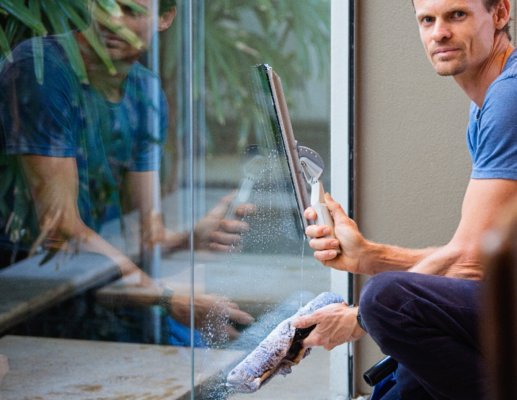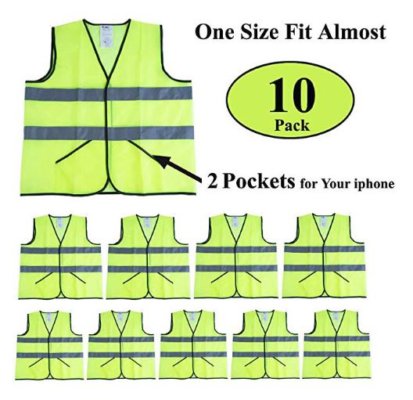Emergency Kit for School

Is your child missing an emergency kit for school?
The first time I did research for this Advisory, I was shocked to read comments like this:
“Wow, an emergency kit for school. What a good idea! I just thought the school would be taking care of this!”
These were comments from people reading articles online! What about all the other parents who don’t have time to spend online?!
First things first. What emergency supplies does your school store?
A year or so ago I attended a training put on by the Earthquake Country Alliance, and sat next to a woman who works with schools. She told me about a school that called to ask her to inventory their emergency supplies shed. “How long has it been since you checked it?” she asked. The answer was, “Uhhhh…”
When she opened the shed she discovered what she called “a hazmat situation.” The shed had leaked and everything inside was completely spoiled and contaminated!
That story should encourage you, when you go to your Back to School night, to ask not only what supplies are kept at school but also how often they are refreshed.
Next, what emergency supplies does the school want children to bring? Are they adequate?
In some schools in our area, each child is required to bring an “emergency kit for school” at the start of the school year. Reading the instructions closely, I discovered that the kit is to consist of a quart-sized resealable plastic bag with the child’s and teacher’s name on the outside, some snacks, and a personal note from the parent to the child.
This “kit” would sustain the kids I know for about 15 minutes.
Here’s another list from a school district in the mid west: ”A little food, some water, a space blanket or large plastic trash bag, a non-toxic light stick and a letter or photograph from home.”
As a parent, you need to find out about “required kits” at your school. The questions to ask:
- What goes in the kits?
- How are they stored?
- What about kids whose parents send nothing at all?
Third, what sort of PERSONAL emergency supplies make sense for YOUR child?
Here at Emergency Plan Guide we talk about survival kits frequently, so none of this should be new or different. In this section we’re not talking about the “required kit” that the school wants to collect and hold. Here, we’re talking about emergency supplies specifically for your child. A few things to consider:
- Your child may need access to emergency supplies at any time! An emergency could happen on the way to school, or on the way home, not just while the child is in class. So, the best place to have supplies is in the kid’s bookbag or backpack.
- Of course, this kit is meant for emergencies only. It’s not to be shared or talked about at recess. This means the kit has to be separated from the rest of the stuff in the bag.
- Every kid’s personal emergency kit will be different. Your first-grader just won’t need or want the same stuff that your 6th-grader wants! And, of course, that kit’s contents will have to change regularly.
Some suggestions from parents for customizing an emergency kit for school.
The kit needs its own pocket.
Pick a backpack or book bag or rolling cart with a zippered pocket for the emergency kit. A bottom pocket would work, as well as an outside pocket of the right size. You’ll have to shop for the right backpack based on your your kid’s size, sex and whatever is in fashion at the school!
An older child may like a “tactical” bag with mesh and lots of pockets – as long as it has one pocket for the survival kit.
Find a sensible container for the personal emergency kit.
Depending on the size of your kid’s backpack, you will very likely be able to find an individual zippered toiletries bag or one in a set of organizers that will fit perfectly in the pocket or on the bottom of the bag. You might want to use a clear bag (meant for travelers) and a couple of sets of compressible “packing cubes.” If you’re packing a jacket or other emergency wear, being able to compress it would be a great space saver. ( Here’s the link to an Advisory with some handy packing tips and organizers.)
You may even be able to pack supplies in a tin box that will fit in a particular pocket.
In any case, the idea is to avoid your child having to paw past the kit to get to books and papers, etc.
What goes into the personal emergency kit for school?
If the student carries the bag every day, it can’t be too heavy. (That’s why a rolling cart is a good idea!) Still, the kit should include items from this list:
- Food – energy bars, non-perishable snacks. Hard candies. Get some protein bars and not just carbs!
- Water – if your child carries a water bottle every day anyway, that may suffice. Otherwise, consider packets of water.
- Warmth – Poncho, space blanket, extra jacket. Maybe hand warmers.
- Light – Pen with light; light stick.
- Emergency whistle – good quality. Cheap plastic whistles are hard to blow and may not give the sound quality your child needs.
- First aid items – Most children won’t be able to use a full first aid kit, but they certainly know and love band aids and maybe anti-bacterial cream.
- Face mask for emergency use.
- Wet wipes individually packaged.
- ID card with emergency contacts and family photo – protected from getting wet.
- Emergency phone if allowed and if the kid knows how to use it.
- Small toy, book or comfort item.
Warning: The emergency kit for school is NOT the place for medicines or drugs. Most schools have strict rules about how student prescriptions are to be handled. Be sure you find out about those rules.
Suggestions for parents whose kids walk home alone . . .
Phone Wristwatch.
The minute school lets out I have two young neighbor children who immediately call their parents using a phone wristwatch. Children aren’t allowed to have phones at school, but the watches are allowed. I’ve interviewed the parents, who REALLY like being able to check in via voice and talk with the kids as they head to their after-school care locations. Questions to have in mind:
- Is the wristwatch phone limited to a particular carrier?
- Can you connect the wristwatch phone via app to YOUR phone? (iOS or Android)
- Does it monitor the child’s location via GPS? Can you set limits and get an alert when the child goes out of area?
- How many phone numbers can be programmed into the wristwatch phone?
- What sort of access to the internet (games!) is available through the phone?
The phone below is a good example. I was attracted because this phone limits calls to 10 known friends or family, and blocks all others. It also can block calls during class time. Naturally, I was looking for different colors, too! Click on the image or the link to check out all the details at Amazon.

Welcome-home doorbell Camera
By now we’ll all seen the home security cameras that can alert you when your kid steps through the front door. Again, parents whose kids arrive home to an empty house are really comforted by this technology. Of course, you’d want to get the kind that allows for two-way conversation.
We’ve written many times about front door security. New models are coming online all the time. The Ring model shown below does what I was looking for for parents wanting to know their child is home safely after school.

Special needs kid?
If you have a special needs kid, please take a look at my recent Advisory that describes a particularly powerful tracker for kids who need close supervision.
Let me know of other suggestions you have for items for kids, or what your school requires. I’d like to include that research next time!
Virginia
Your Emergency Plan Guide Team
Welcome to new readers! If you’d like more on the topic of kids and school, you may want to check out this Advisory with Preparedness Questions for Back to School.










 Just waiting for you to make a mistake!
Just waiting for you to make a mistake!





